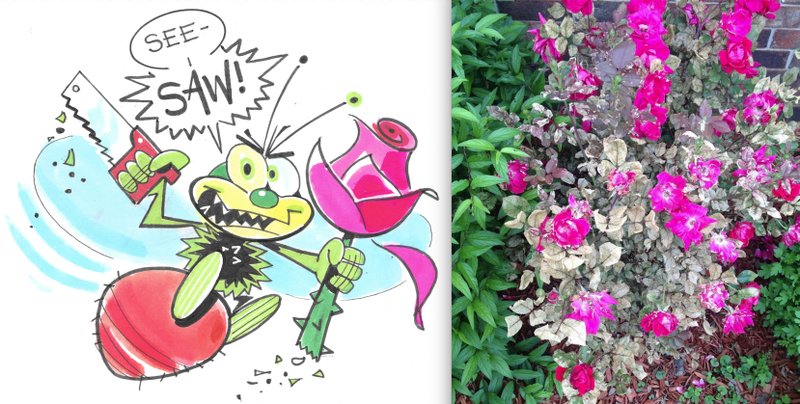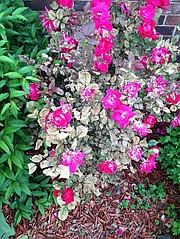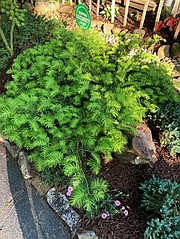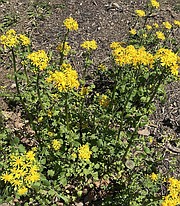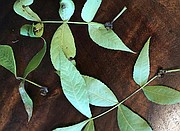Each of today's questions includes a photo.
Q What is this? Our Knock Out roses look like they're dying. Never saw this before. Can I treat them or just pull them up?
A Wow! I have never seen such an infestation on roses this early in the season. The culprit is a sawfly, given the common name rose slug. It is not a slug but the larval stage of a flying insect known as a sawfly. Adult sawflies lay eggs on the underside of the leaves. The larvae emerge in a few weeks and immediately begin to feed off the tissue of the leaves, leaving being a papery appearance to the leaves. There are several species of sawflies that can attack roses. Some only have one generation per year, while others can have multiple generations. If you have ever grown a hardy hibiscus, the mallow sawfly is responsible for turning their leaves into lacy structures. As much damage as you have, I would imagine you still have some insects feeding. Look on the bottom of the leaves. The larvae look like small caterpillars or slugs. Insecticidal soap or neem oil are two organic approaches. Sevin, Orthene or malathion will also work. Enjoy your blooms, then give the plant a haircut, disposing of the damaged tops. Monitor the new growth to keep it healthy.
Q Leaves have been falling off my hickory tree by the hundreds if not thousands. They all seem to have these black growths along the stems and the underside of the leaves. Incidentally, cedar waxwings are swarming on the tree eating something. Ideas?
A Your tree has an infestation of galls -- more than likely the hickory leaf stem gall. The galls are on the petioles of the leaf -- which is the small stem between the leaflets and the tree. The galls are caused by a type of aphid. When the new leaf buds are emerging in the spring, the aphids feed on them. The tissue around the feeding grows and encloses the aphids. Leaves can fall off prematurely, but usually this won't damage large, healthy trees. Rake up the dropped foliage and dispose of it. Once you see the damage, nothing can be done that season. If it happens every year and gets worse, sprays can be used in the spring as the leaves are emerging, but again, that is usually not necessary.
Q Do you know what this is please?
A The plant in question is a plum yew -- Cephalotaxus. It is a great evergreen shade plant with a unique texture. There are several varieties on the market, with spreading or upright forms available -- compact and wider (Prostrata) versus upright and taller (Fastigiata).
Q Would you please identify this for me?
A It is in the aster family. I used to know it as Senecio glabella, but the Latin name has changed to Packera glabella. Common name is butterweed, yellowtop or cress-leaf groundsel. It is an annual wildflower that does well in moist areas in sun or shade. It freely reseeds and should return each year.
Retired after 38 years with the University of Arkansas Cooperative Extension Service, Janet Carson ranks among Arkansas' best known horticulture experts. Her blog is at arkansasonline.com/planitjanet. Write to her at P.O. Box 2221, Little Rock, AR 72203 or email
HomeStyle on 05/18/2019

